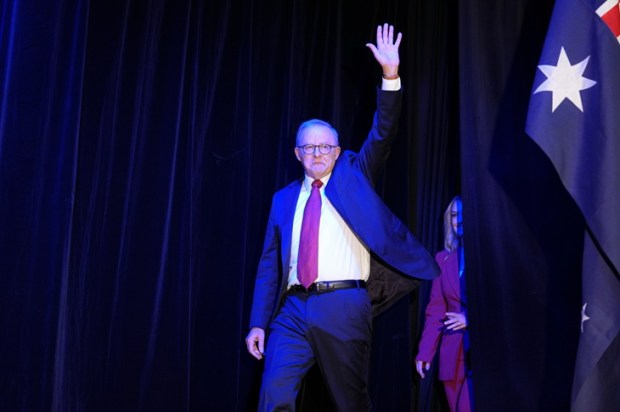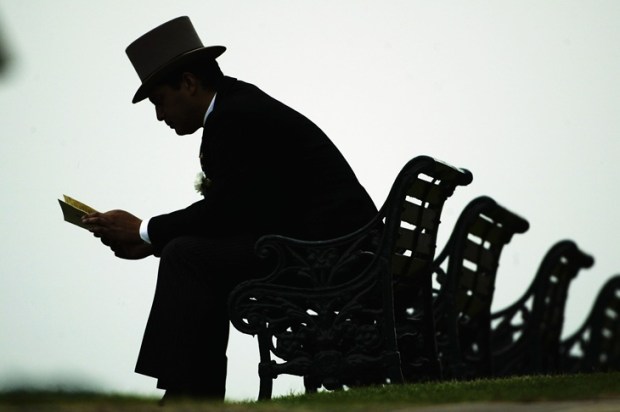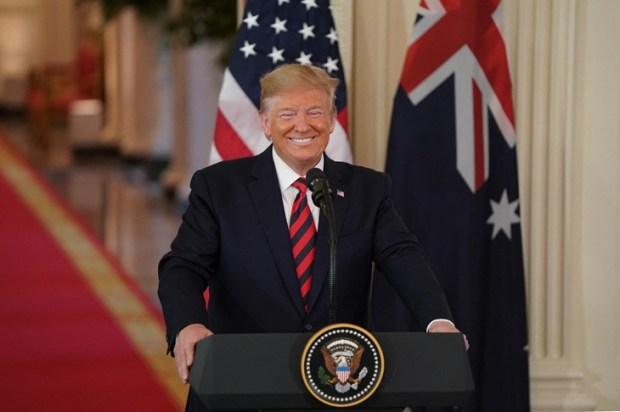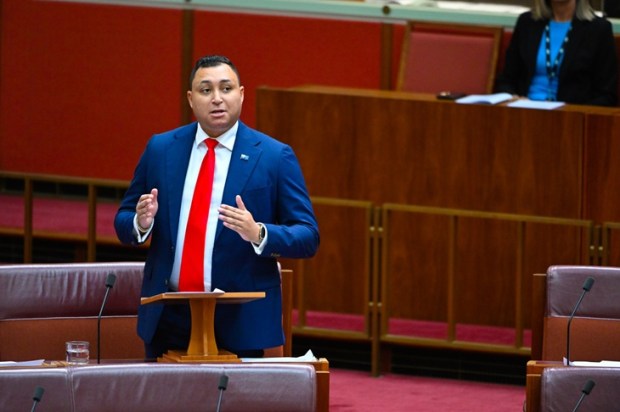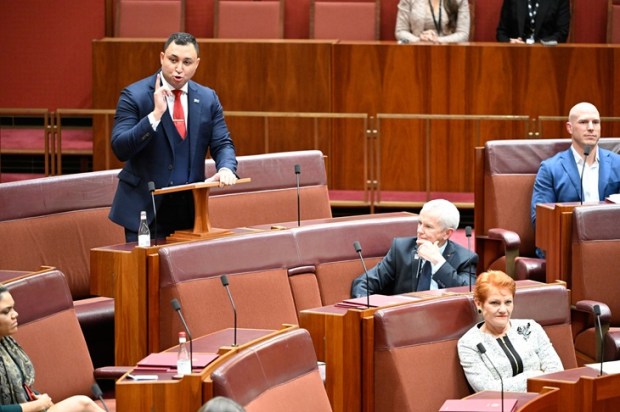Climate Change and Energy Minister Chris Bowen and his entourage have added a few more tonnes of carbon emissions flying to the United Arab Emirates for the United Nations’ annual climate change jamboree but that green hypocrisy should be the least of taxpayer concerns.
Far more worrying is Bowen’s plan to turbocharge investment in renewables by beefing up his Capacity Investment Scheme (CIS).
The CIS is a dangerous debt trap that was cooked up to announce the week before Bowen struts the world stage in Dubai at the United Nations COP28 Climate Change Conference from November 30 to December 12.
The aim of the CIS, which was signed off less than 12 months ago in December 2022 by the Commonwealth, state, and territory governments, was to drive investment in 6 GW of dispatchable power.
Bowen announced on November 23 however that the scheme would be souped up to underwrite a gigantic 32GW, with an additional nine GW of storage capacity and 23 GW of renewable power.
That’s a five-fold increase but because of the unreliability of renewable energy, it will probably only replace about 10GW of coal and gas.
Mr Bowen desperately needs to accelerate investment in renewables to increase their share of electricity generation from 32 per cent in 2022 to meet his target of 82 per cent by 2030.
There is no way that Mr Bowen is going to come anywhere near that target but an awful lot of taxpayer money will be wasted nonetheless.
For a start, because weather patterns cover large areas, renewables compete with each other at the same time driving prices into negative territory.
That’s why Bowen has had to abandon the Renewable Energy Target which already provided generous subsidies and use taxpayer money to guarantee income.
The cost will be partly hidden in energy bills and rack up more national debt. Renewable energy, because it relies on the weather, is, by definition, unreliable.
There are weeks of the year when the wind hardly blows creating wind droughts and there are times of the day – called night – when the sun doesn’t shine. This inevitably pushes up the cost of power at those times, sometimes to thousands of dollars per minute. Renewable energy generators will need all of that ruinous cost to consumers just to try to cover the cost of construction and even then it won’t be enough to break even. That’s why the government is stepping in to guarantee the floor price for power.
But make no mistake. When the government borrows vast amounts of money, it pushes up interest rates which will fuel inflation and sustain our cost of living crisis.
Bowen’s unholy rush to build vast numbers of renewable generators and transmission lines between now and 2030 is pushing up the cost of labour but that’s not the end of the pain.
Australia is competing with the US, the UK, and the EU which are all also desperately seeking investors in green energy. The US alone has offered $560 billion in ‘support’ for green energy. This is creating a bidding war to increase the attractiveness of returns on green investment.
If these projects were attractive investment opportunities, the government would not need to put in additional taxpayer money on top of the cross-subsidy provided by renewable energy certificates because banks and investors would be scrambling to make money out of the green energy bonanza.
Instead, investment in large-scale solar and wind farms fell precipitously in 2023. Indeed, the Clean Energy Council warned that the first six months of 2023 had the lowest level of financial commitments since 2017.
The fact that the government has had to increase its backing for renewable energy despite already generous subsidies tells you everything you need to know about the attractiveness of these projects.
To pump up investment, the government will guarantee floor prices for revenue earned by any one project. If revenue falls lower than the agreed amount, the federal government – ie you, the taxpayer – will pay the shortfall.
If revenues exceed a price ceiling set in advance the government will take a share of profits but you can bet your bottom dollar that the companies will heap on ‘costs’ to ensure that there are no profits.
So how much will it cost you the taxpayer? Nobody knows because the government says that the subsidies to each company will be kept secret under commercial-in-confidence provisions. That means taxpayers will not be able to assess how much money is being wasted on each project. All that they will know is that national debt will pile up every year as will the interest on that debt.
What we do know is that the cost of getting to the government’s Net Zero commitments by 2030 was modelled this year at $1.2 to $1.5 trillion.
By 2060 it is estimated that getting to net zero emissions will cost $7 to $9 trillion.
In addition, we will have to devote an area half the size of the state of Victoria to renewable energy and transmission lines.
Remember too that the lifespan of a wind or solar plant is only about 15 years so the eye-watering costs will be ongoing.
The surges of power coming into the grid asynchronously risk destabilising it and causing blackouts across the states.
The additional spider web of overland power lines that will be needed to achieve the renewable pipe dream will substantially increase the risk of bushfires, sterilise our prime agricultural food bowls, and severely damage our terrestrial and marine environments.
Yet even that’s not the end of our problems.
A group of scientists are pushing the government to adopt a new roadmap created by the Superpower Institute.
There are apparently only four greenhouse gas monitoring sites across the country – Aspendale in Victoria, Wollongong in NSW, Cape Grim in Tasmania, and Gunn Point in the Northern Territory.
According to them, that’s not enough. They want to increase monitoring sites to at least 16 and to measure not just carbon dioxide but methane, nitrous oxide, and ancillary gases.
They claim that this will allow emissions sources to be pinpointed and carbon sinks identified. The idea is to compare these findings with satellite data.
Don’t expect the findings to do anything other than add to the pain of emissions reductions. The International Energy Agency (IEA) already claims we’re emitting five times more methane than the population ‘warrants’. This obviously doesn’t take into account the fact that Australia is a net energy exporter so much of its emissions should be attributed to populations in Asia and Europe that import our coal and gas.
The Australian Conservation Foundation claims that Chevron released 16 million tonnes more greenhouse gases than it said it would from its Gorgon project in Western Australia.
The Clean Air Task Force claims it found evidence of methane leaks at 15 of 38 sites it visited in New South Wales and at 20 of 42 sites in Queensland.
These claims have been refuted by the Australian Petroleum Production and Exploration Association.
The group of scientists say that with this project up and running they’ll be able to adjudicate. Maybe. But what about the emissions of competitor countries? Does anyone believe China will bother to assess its emissions? Or be penalised for them? That seems highly unlikely.
If the EU wants to slap a border adjustment tax on emissions, it had better make sure that it applies to all countries equally but you can be sure there will be carve-outs for so-called ‘developing’ countries which will ensure that Australian jobs are exported to countries like China and emissions keep escalating.
We are told Australian companies making green steel or hydrogen should be able to say just how much lower their emissions are than those of black steel or black hydrogen but the chances of Australia producing any green steel or green hydrogen any time soon are virtually non-existent.
What is sure is that the climate caper will continue to shortchange Australians for the foreseeable future putting our prosperity in peril for no environmental gain.


